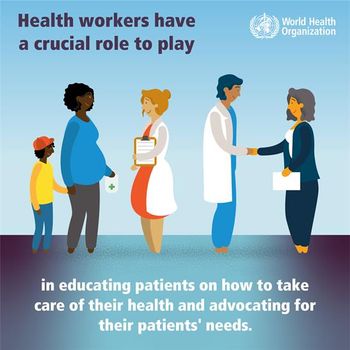
In May 2017, a case of hepatitis A was detected in a Salt Lake County hospital. Over the next 20 months, Utah health officials worked to address what ended up being the largest hepatitis A outbreak in the state’s history.

In May 2017, a case of hepatitis A was detected in a Salt Lake County hospital. Over the next 20 months, Utah health officials worked to address what ended up being the largest hepatitis A outbreak in the state’s history.

Contagion® caught up with Christian Lillis, executive director of the Peggy Lillis Foundation, to hear about the organization’s recent efforts, what obstacles it’s facing, and how providers can help.

New York Times coverage of the problematic “superbug” generates quite a response.

Delafloxacin was comparable to vancomycin/aztreonam in eliminating MRSA at 98.1% versus 98.0%, respectively, at follow-up in 2 pooled phase 3 studies.

Although the rate of outpatient antibiotic prescriptions is down overall, a new study highlights how the United States may be falling short of meeting antibiotic stewardship goals.

Investigators sampled 6 ball pits in physical therapy clinics throughout Georgia to determine the level of microbial colonization.

Among gay and bisexual men, receipt of PrEP at study enrollment was linked with an increased incidence of STIs, but 25% of participants accounted for 76% of all STIs.

Dolutegravir/lamivudine (Dovato) becomes the first 2-drug, fixed-dose complete treatment for treatment-naive patients with HIV.

Investigators used computer algorithms to predict primate species likely to be positive for Zika virus in Central and South America.

Following years of research and development, NIAID scientists have begun enrolling participants in the first human trial of a universal flu vaccine candidate.

Here is a look at infectious disease related US Food and Drug Administration news from the week of March 31, 2019.

We’ve rounded up a list of important US Food and Drug Administration (FDA) and US Department of Agriculture (USDA) recalls from this past week.

Stay up-to-date on the latest infectious disease news by checking out our top 5 articles of the week.

Health officials are currently unaware of the source of a Shiga-toxin producing E coli O103 outbreak that has sickened 72 individuals across 5 states.

Contagion® caught up with William Schaffner, MD, medical director of the National Foundation for Infectious Diseases, to discuss the highlights from this week’s NFID Annual Conference on Vaccinology Research.

Contagion® is reflecting on the advancements in treatment and prevention that have been made in infectious diseases while identifying areas that need further improvement to reduce preventable deaths globally.

Although preventing the transmission of HIV from mother to baby is of paramount importance, we cannot overlook other health issues that may crop up later in life for children born to women with HIV.

An intradermal Ebola vaccine candidate shows promise as a safe, temperature-stable, and effective option for preventing outbreaks, new data show.

An antiviral drug that could offer months of protection against the flu may be on the horizon and ready to fill in some of the gaps of the seasonal flu vaccine.

In the aftermath of Cyclone Idai, more than 1000 cases of cholera have been reported in Mozambique.

This In the Literature piece details a study evaluating the appropriateness of prescriptions in comparison to evidence-based guidelines and expert opinion.

The latest case cluster in the United States has led a university to change policy regarding the MMR vaccine.

Are the threats of CMS financial penalties creating tunnel vision for certain hospital-associated conditions?

The American Academy of Pediatrics is giving its recommendation to the nasal spray form of the influenza vaccine for the 2019-2020 flu season, meaning parents will have 2 choices when getting their children vaccinated this fall.

A 1-month course of rifapentine plus isoniazid is non-inferior to 9 months of isoniazid alone for preventing TB in individuals with HIV, a study reports.

A recent study has found that a new method of testing circulating H3N2 flu viruses may help flu experts in selecting seasonal vaccine components.

A neural model suggests the frontal lobe is affected early on in HIV disease and the caudate/striatum area is affected when neurocognitive disorder symptoms develop.

A new study found an average decrease of sexual anxiety by 0.27 points when participants were on PrEP compared with before treatment.

Here is a look at infectious disease related US Food and Drug Administration news from the week of March 24, 2019.

We’ve rounded up a list of important US Food and Drug Administration (FDA) and US Department of Agriculture (USDA) recalls from this past week.